Full-Port Valves for Gravity-Fed Tanks/Cisterns
A full-port valve retains the full interior diameter of the pipeline it is connected to. This results in less reduction in flow (and less surface friction) than is caused by using standard valves, which have a smaller interior diameter than the incoming pipe.
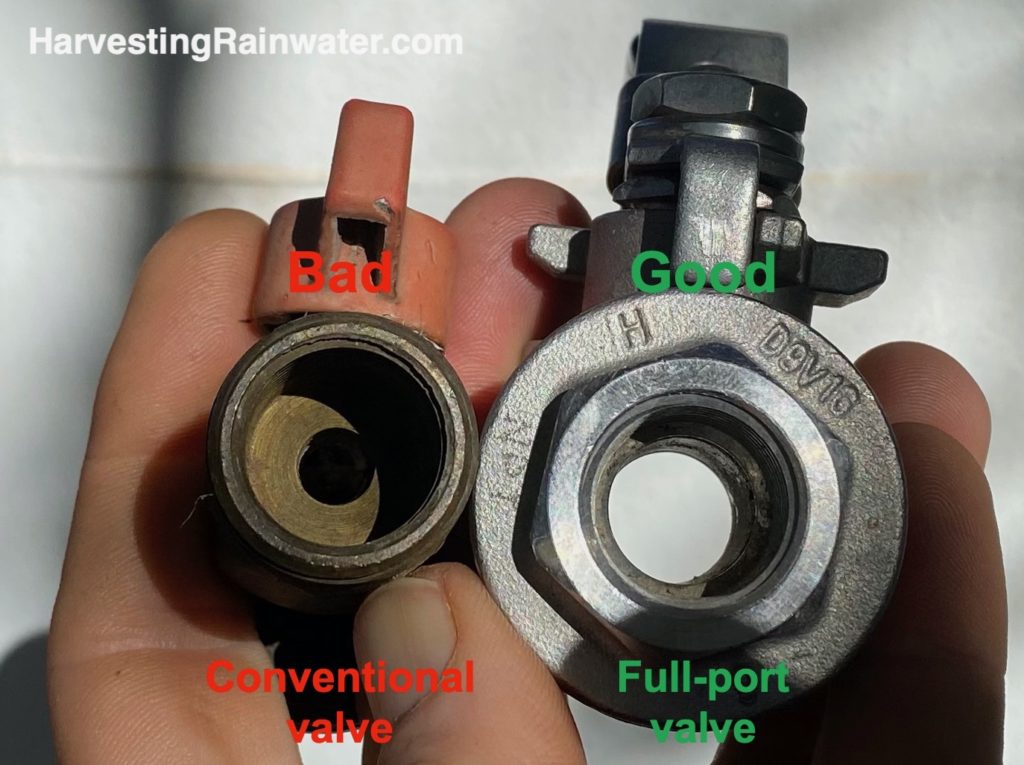
Full-port ball valve on the right – great for gravity-fed water systems; note how the interior diameter is not constricted.
Photo: Brad Lancaster
Full-port valves maintain their full/maximum interior diameter throughout, as opposed to many valves, which reduce/constrict their interior diameter. Such constrictions can greatly reduce the flow volume and velocity of water from a gravity-fed cistern, which is typically a low water-pressure system, which gets lower as the water level in the tank drops. Don’t reduce your gravity-fed cistern water flow with a constricted valve. Instead, use a full port valve for good, convenient flow.
Judge your rainwater system parts supplier or installer by what valves they offer
If you are looking into purchasing a rainwater tank, and you are planning to use the free power of gravity to move the water from the tank to your points of water use, then ask your parts supplier or installer if they can provide you with full-port valves.
If they DO offer full-port valves they are probably good.
If they do NOT offer full-port valves they probably are NOT good, and you should probably look for another parts supplier or installer.
They should be concerned with providing you with the parts and system that will work best for YOU, not the quickest/easiest thing for them to sell/install.
Some full-port valve options:
You can get full-port valves that are ball valves or not ball valves.
Full-port ball valves
These are great in warm climates, but they can rupture and leak if they freeze in cold climates. So make sure they are within properly insulated valve boxes in those freezing climates.
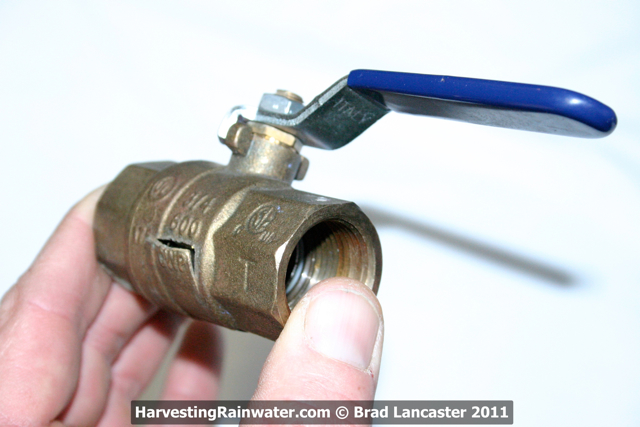
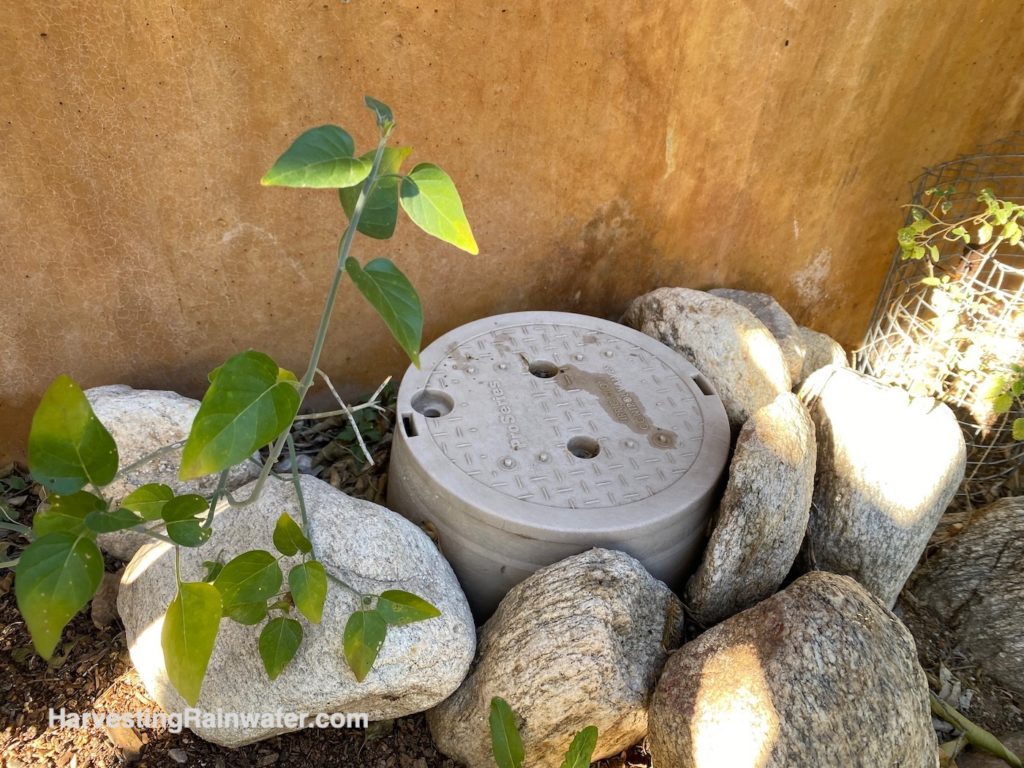
Photo: Brad Lancaster
Stainless steel full-port ball valve
For a nice 3/4-inch diameter (optimal garden hose diameter for a gravity-fed system) full-port valve that works well on rainwater cisterns/tanks from which you irrigate your plants, see the link and images below:
https://www.homedepot.com/p/American-Valve-3-4-in-Stainless-Steel-Quarter-Turn-Hose-Bibb-Shut-Off-Valve-M71QTSS-3-4/306041703
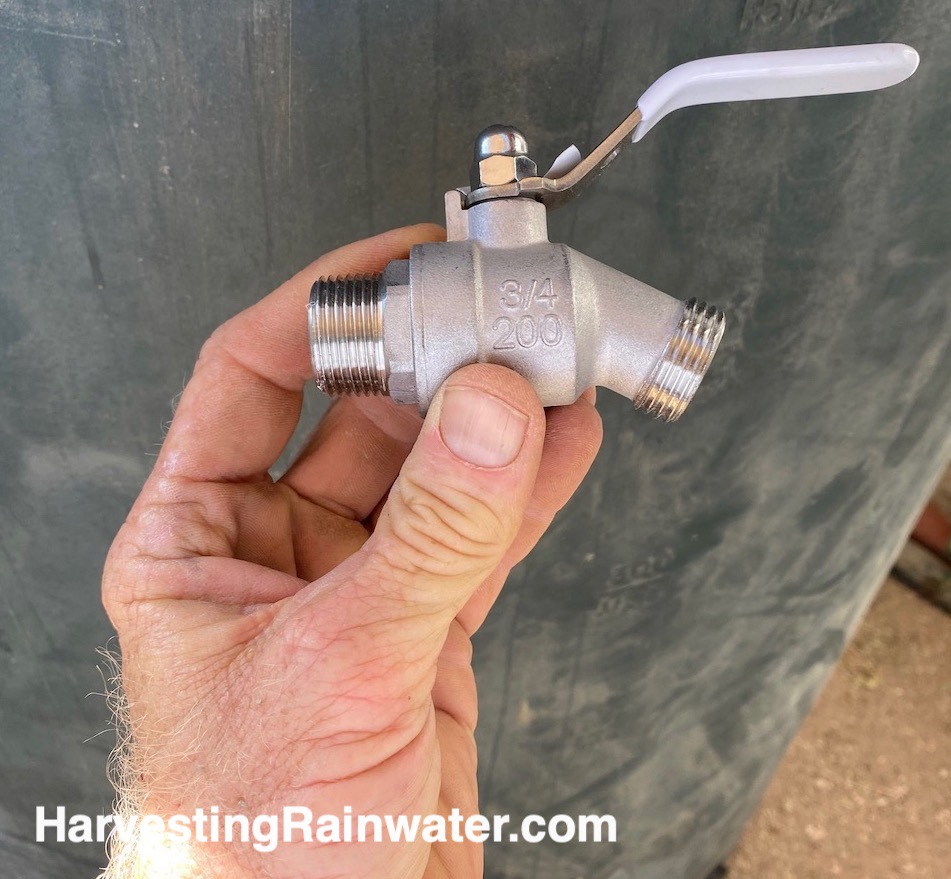
Photo: Brad Lancaster
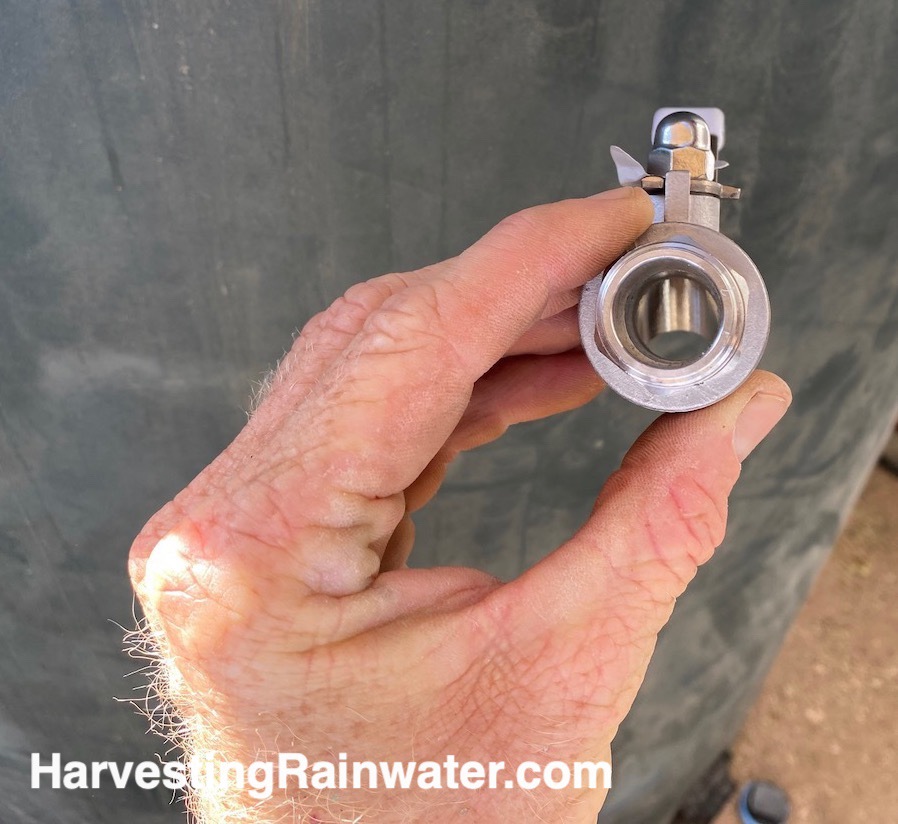
View looking through the valve in the direction water would flow.
Photo: Brad Lancaster
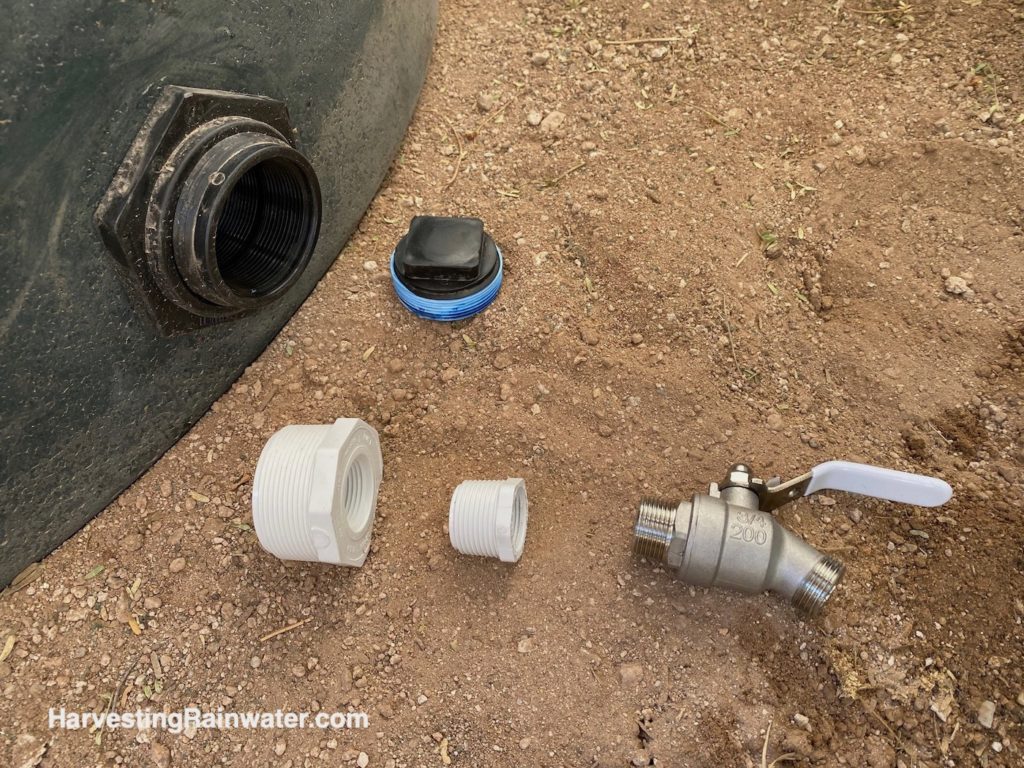
Photo: Brad Lancaster
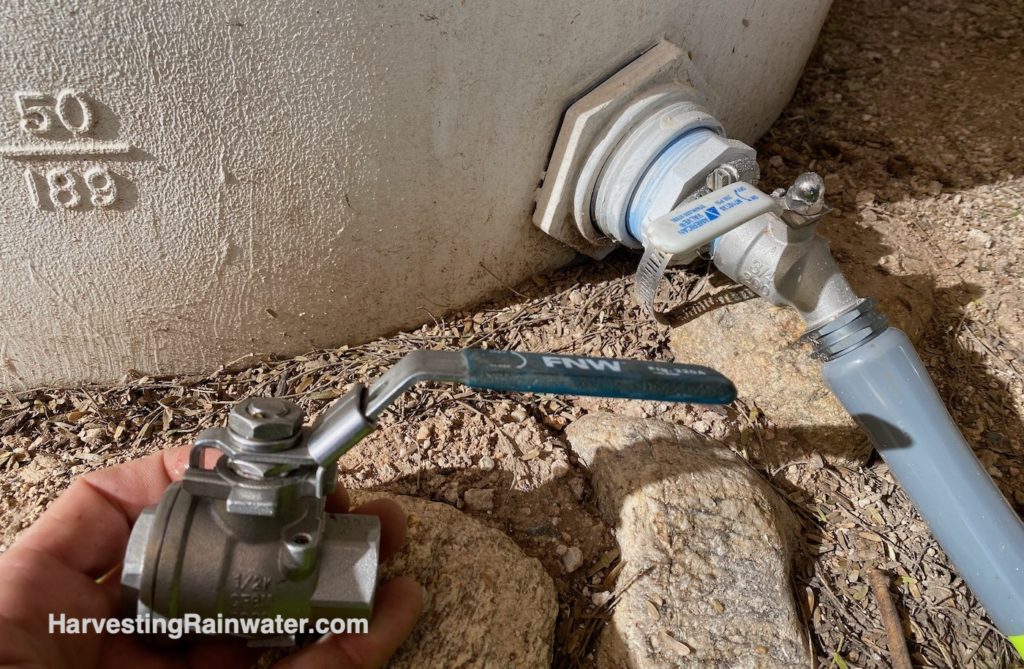
Note that in this installation, I painted my plastic tank with non-toxic roofing paint so the plastic wouldn’t break down in the sun.
For this installation, I used AFM SafeCoat, Dynoseal sealer
over which I painted AFM SafeCoat, RoofGuard elastomeric roof paint.
I also put a stainless steel hose clamp on the plastic reduction coupling before I screwed in the metal valve to reduce the chance of splitting the plastic with the harder metal (and I made sure I did not over tighten).
A 3/4-inch diameter drinking water quality hose is then screwed onto the stainless steel full-port host bibb.
The stainless steel valve on left has an easy lock to hold valve in open or closed position. The lock is the piece of folded metal to right of nut and bolt atop the valve. The folded metal can be slid up or down the handle to lock or unlock handle in place. A nice option if you want to keep little kids from accidentally emptying your water tank.
Photo: Brad Lancaster
Additional full-port ball valve options:
• Search “stainless steel full-port valve” on line.
• 3/4″ Male x Hose Bibb, stainless steel (lead free) valve
Mueller (made in Italy and/or China)
Ball valve – full-port (Valvula de bola – con rosca – lumbrera completa)
3/4 inch 107-824
1 inch 107-405HC
Mueller (made in China)
3/4″ ball valve hose bib (Llave de chorro)
103-024
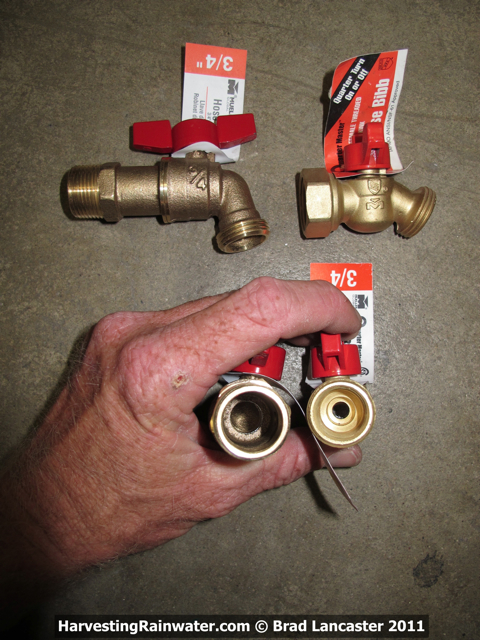
The valve on the right is a 3/4-inch constricted ball valve for a hose bib.
Full-port valves that are NOT ball valves
Because these valves have a rubber seal they are a little more forgiving in freezing conditions than all-metal ball valves. Nonetheless, protect these valves from freezing by installing them in insulated valve boxes or covering them with insulation if there is a risk of freezing.
Full-port snub valves or bent nose garden valves are available.
I like to use a snub nose/bent nose with 1″ interior diameter base/inlet and a 3/4″ outlet with hose bib threads in gardens and landscapes. I then use the widest-diameter drinking-water-approved garden hoses I can get.
Arrowhead brass products (made in Los Angeles, CA, USA)
1 FIP x 3/4 hose, Hose – bent nose garden valve
930, 90043 00930
NOTE: In the same store (Bimsco hardware in Tucson) I have found this brand and model of valve made as both a full port valve, and a constricted valve, so always visually inspect all your valves to make sure they are what you want.
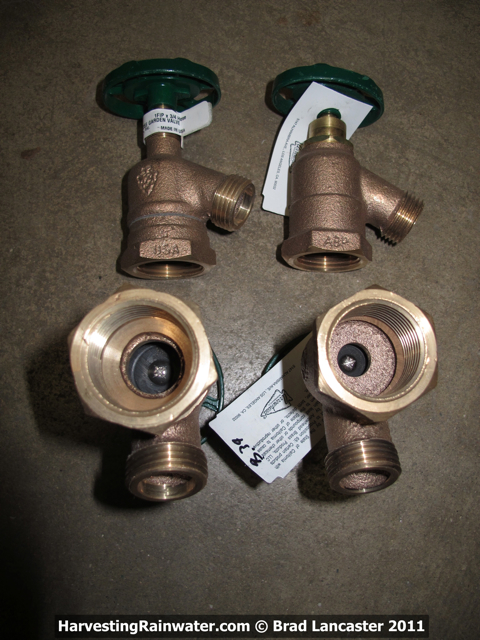
Mueller (made in China)
Bent nose garden valve (Salida inclinada valvula de jardin)
1 inch: 108-105
or
3/4 inch: 108-104
Legend is another brand, but more expensive.
Check out the video below comparing the water flow from a full-port valve versus a conventional constricted valve…
Ideal pipe diameter with home-scale, gravity-fed, rainwater harvesting tanks
I use either 1-inch (25-mm) or 3/4-inch (19-mm) interior diameter pipe (nothing smaller) to distribute rainwater from my tanks to their point of use when using the free power of gravity as my sole means of moving the water.
Hoses that maximize gravity-fed water flow
Make sure you also use 3/4-inch diameter garden hoses (NOT smaller diameter hoses) with gravity-fed systems to maintain the good flow the full-port valves give you.
More info on hoses here.
